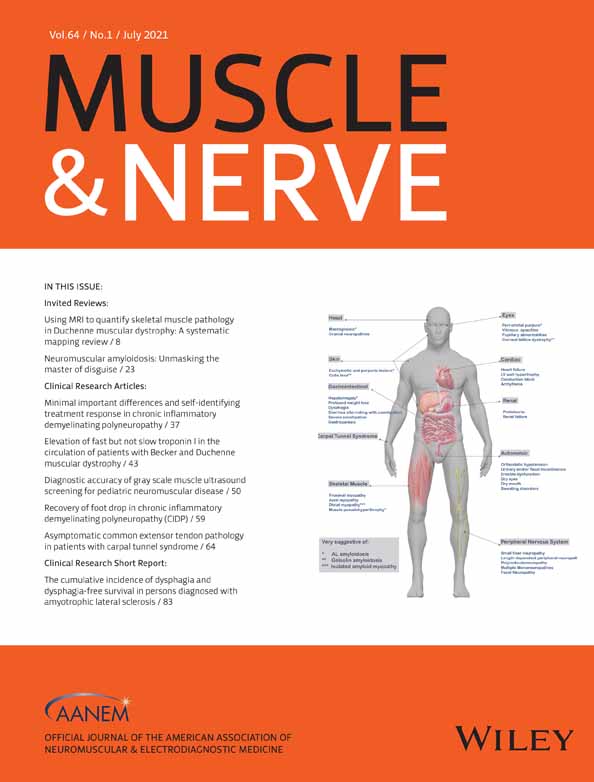Hyperlactacidemia as a risk factor for intensive care unit-acquired weakness in critically ill adult patients
Abstract
Introduction/Aims
Intensive care unit-acquired weakness (ICUAW) is a severe neuromuscular complication of critical illness. Serum lactate is a useful biomarker in critically ill patients. The relationship between serum lactate level and ICUAW remains controversial. This study evaluated whether hyperlactacidemia (lactate level >2 mmol/L) was an independent risk factor for ICUAW in critically ill adult patients.
Methods
An observational cohort study was performed in a general multidisciplinary intensive care unit (ICU). Sixty-eight consecutive adult critically ill patients without preexisting neuromuscular disease or a poor pre-ICU functional status whose length of ICU stay was 7 or more days were evaluated. Patients were screened daily for signs of awakening. Muscle strength assessment using the Medical Research Council score was performed on the first day a patient was considered awake. Patients with clinical muscle weakness were considered to have ICUAW.
Results
Among the 68 patients who achieved a satisfactory state of consciousness, the diagnosis of ICUAW was made in 30 patients (44.1%). After multivariate analysis, hyperlactacidemia (P = .02), Acute Physiology and Chronic Health Evaluation II score (P = .04), duration of mechanical ventilation (P = .02), and the use of norepinephrine (P = .04) were found to be significantly associated with the development of ICUAW in critically ill patients.
Discussion
This study shows a number of risk factors to be significantly associated with the development of ICUAW in critically ill adults. These factors should be considered when building early prediction models or designing prevention strategies for ICUAW in future studies.
CONFLICT OF INTEREST
None of the authors has any conflict of interest to disclose.
Open Research
DATA AVAILABILITY STATEMENT
The data that support the findings of this study are available from the corresponding author upon reasonable request.




